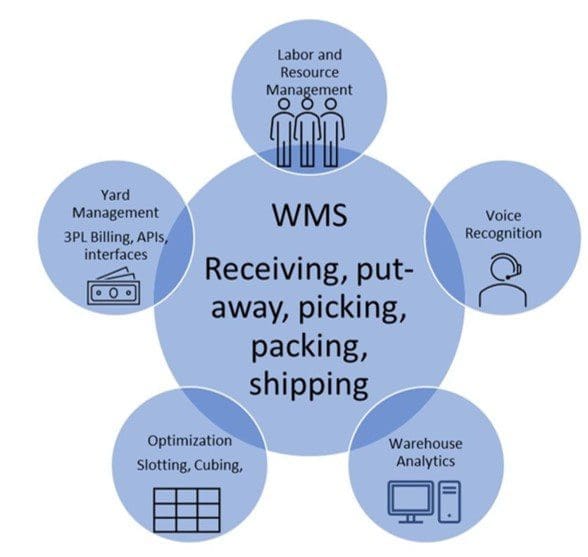 This year’s research on the global WMS market has revealed many of the perennial factors influencing demand for WMS solutions – such as e-commerce fulfillment needs. However, there is one dynamic that became ubiquitous across market segments this year. I refer to this dynamic as demand for “WMS-plus.”
This year’s research on the global WMS market has revealed many of the perennial factors influencing demand for WMS solutions – such as e-commerce fulfillment needs. However, there is one dynamic that became ubiquitous across market segments this year. I refer to this dynamic as demand for “WMS-plus.”
—
I have now completed ARC Advisory Group’s research on the global warehouse management systems (WMS) market, and it is currently in editing. ARC clients, please reach out to your account manager to obtain access to the study. Two weeks ago, I wrote about the WMS market’s growth in 2022 and discussed some of the technical factors at play within the market over the year (see The Warehouse Management Systems (WMS) Market Continues to Grow – Beyond a Reasonable Doubt). Today’s article will build upon that post with a discussion of the major factors influencing demand for WMS solutions, and the dynamics behind this demand. These trends are based on insights ARC obtained from discussions with numerous organizations throughout our primary research process.
E-Commerce Fulfillment Needs Remain Paramount
Of course, the need to run warehouse operations more effectively and efficiently is the primary and ongoing reason for WMS sales. But beyond that “given,” the pressures and needs arising from e-commerce fulfillment and omni-channel operations continue to be the most pervasive stimulus for taking that action. The need for responsive fulfillment operations, driven by e-commerce expectations and same day or next day delivery, are in turn pressuring warehouses to find more effective ways to handle rush orders. WMS capabilities such as waveless fulfillment or other business rules to prioritize orders while still efficiently handling high volumes are central to customer demands. Additionally, put-wall functionality, routing orders to pack stations, and out of the box integrations to automation such as sorters and pick/put-to-light are frequently noted as high priorities within the WMS selection process.
WMS Selection and Decision-Making: WMS-Plus is a Must
Supply chain convergence – or the concept of breaking down silos to create interconnected business processes across functions, time horizons, locations, and processes – has been a vision influencing warehouse operational improvements for years. However, the ability to offer, support, and integrate adjacent and complementary technologies has escalated from a secondary consideration to a primary determinant of the WMS selection process. The WMS selection process has evolved to a WMS-plus selection process. For example, warehouse labor management has consistently been an important add-on to WMS. But now labor management applications have evolved to include employee engagement, retention, and the management of other warehouse resources. These solutions are now critical to many companies when selecting a WMS. Additionally, the “other resources” to be managed are increasingly warehouse robotics or other forms of automation.
Warehouse automation providers that also sell WMS have long viewed as a strategic advantage their ability to handle both manual and automated processes. But today, traditional large WMS suppliers, mid-sized suppliers, and ERP suppliers with WMS state that their ability to offer rapid onboarding, standardized integration, and orchestration of robotics and automation has become a major driver for their customers’ selection of their WMS. The influence of warehouse automation and robotics on the WMS market can be seen in the recently enhanced and branded offerings of many WMS suppliers such as Blue Yonder Robotics Hub, SAP Warehouse Robotics, Manhattan Associates’ WES in WMS, Oracle Warehouse Automation Cloud, Infor WMS Automation Agent, Consafe WCS, Made4Net WCS, and Koerber’s roll-out of its Unified Control System. Even beyond the warehouse, the unification of adjacent processes such as yard management, transportation management, and order management, has become a central determinant of the best technology partner. And the term “partner” brings me to my final point. The market has truly evolved from transactional technology selection to one of determining which select number of technology vendors to partner with for the needs of the organization as a whole for the foreseeable future.

















